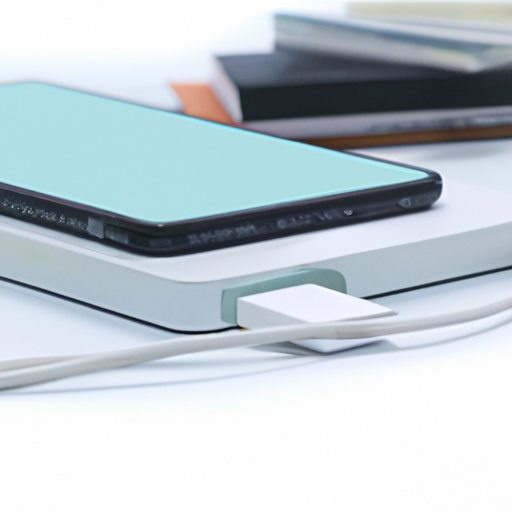
Introduction
Connecting your iPhone to iTunes is an important task for many Apple users. Whether you need to transfer media between your computer and iPhone, backup your device, or update your iOS software, you’ll need to be able to connect the two devices seamlessly. However, it’s not always straightforward how to do so. If you’re wondering how to connect iPhone to iTunes, you’re in the right place! This article will guide you through the process and offer tips and advice for transferring data and managing your iTunes library.
Step-by-Step Guide
Connecting your iPhone to iTunes is easier than you might think. Here’s a step-by-step guide to help you get started:
1. First, make sure that you’ve installed the latest version of iTunes on your computer. You can download iTunes for free from the Apple website.
2. Connect your iPhone to your computer using a USB cable.
3. If prompted, enter your iPhone passcode on your device.
4. On iTunes, click the small iPhone icon in the top left-hand corner of the screen. This will allow you to access your iPhone’s settings.
5. Click the “Summary” tab to view details about your iPhone.
6. From there, you can choose to manually or automatically manage music and videos, backup your device, check for software updates, and more.
Common Pitfalls and Troubleshooting Tips
While connecting your iPhone to iTunes is usually straightforward, you may encounter some common pitfalls. Here are some tips to help you troubleshoot and resolve these issues:
– If you’re having trouble connecting your iPhone to iTunes, first try restarting both your computer and your device.
– If iTunes doesn’t recognize your iPhone, make sure that you’re using a USB cable that supports data transfer.
– If you’re unable to backup your device to iTunes, make sure that you have enough storage space on your computer and that your iPhone is connected to a strong Wi-Fi network.
How to Transfer Specific Types of Data
Knowing how to transfer specific types of data, such as music or photos, can help you get the most out of your iTunes experience. Here’s how to transfer different types of data between your iPhone and iTunes:
– Music: To transfer music from iTunes to your iPhone, connect your device to your computer and click the “Music” tab on iTunes. From there, you can select which songs, albums, and playlists you want to sync to your device.
– Photos: To transfer photos from your iPhone to iTunes, connect your device to your computer and click the “Photos” tab on iTunes. From there, you can choose to sync photos from specific albums or folders.
– Other types of data: To transfer other types of data, such as contacts or calendars, connect your iPhone to your computer and use the appropriate software, such as iCloud or Outlook.
Using iTunes on Different Platforms
Whether you’re using a Mac or PC, you can connect your iPhone to iTunes with ease. Here are some detailed instructions for each platform:
– Mac: To connect your iPhone to iTunes on a Mac, simply open iTunes and connect your device using a USB cable. You should see your device appear in the top left-hand corner of the screen.
– Windows: To connect your iPhone to iTunes on a Windows computer, make sure that you’ve installed the latest version of iTunes and connect your device using a USB cable. You should see your device appear in the top left-hand corner of the screen.
Alternatives to iTunes
While iTunes is the most popular way to connect an iPhone to a computer, there are other options available. Here are some alternatives for transferring data and media between your iPhone and computer:
– iCloud: iCloud allows you to backup your device, sync data between devices, and access your media library across different devices.
– AirDrop: AirDrop is a quick and easy way to transfer files between Apple devices, including iPhones and Mac computers.
– Third-party software: There are many third-party applications available that can help you transfer data between your iPhone and computer, such as iExplorer, AnyTrans, and Syncios.
Tips for Managing a Large Media Library
If you have a large media library on iTunes, you may encounter some common challenges. Here are some tips for managing your media library:
– Use playlists to organize your music by mood, genre, or activity.
– Create separate libraries for different types of media, such as music, movies, and TV shows.
– Use the “Get Info” feature in iTunes to edit track names, artists, and album art.
– Consolidate your media files to ensure that they’re all stored in the same location on your computer.
Conclusion
Connecting your iPhone to iTunes is an important task for many Apple users, and it doesn’t have to be complicated. Whether you’re transferring music, backing up your device, or simply managing your media library, these tips and instructions should help you get the most out of your iTunes experience.




